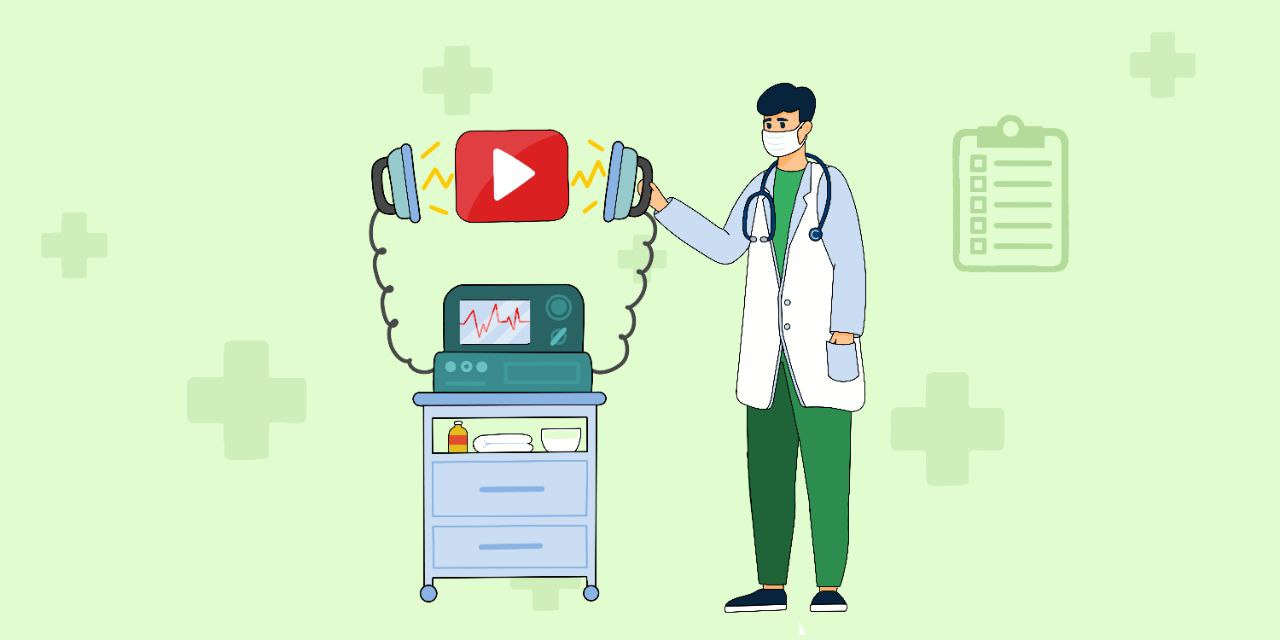How to Revive an Old Video on YouTube

To help revive, energize, or even resurrect a channel, and to get videos growing and gaining views again, there are several effective methods.
Note: there's no guarantee that these will work specifically for you. Ultimately, the result will depend entirely on how interesting your videos are.
No one can guarantee a YouTuber that their content will skyrocket into trending after following and applying some advice. Remember that every case is individual.
So let's start with an important question you need to ask yourself: is it really necessary to revitalize an old video?
Yes, you've put a lot of effort and time into creating a specific video, uploaded it onto YouTube, and it just didn't get views.
So if you feel your video was important but did not get the results you expected, try revamping the content. Spend time studying your topic in more detail, and gathering more interesting material. Read the comments under your older video and look at the analytics — try to understand exactly what viewers didn't like, and take that into account when creating your new video.
And now let's talk about how you can breathe life into videos that, for some reason, turned out to be unsuccessful.
Should I delete an old video that has few views?
Let's not drag out the answer: it's not worth deleting older videos. Especially if some noticeable amount of time has passed since their publication.
Why it's not recommended to delete older videos:
- First, by deleting the video, you'll also remove the watch time and traffic source it represents. Even if it seems like there were very few views, they may still hold value, especially for small channels.
- Second, by removing the video, you're also deleting information about your topic and audience.
When you're just starting a channel, YouTube doesn't have any information about the audience to whom it should recommend your videos. That's why it's crucial for new creators to work on the textual elements of their videos: titles, descriptions, even those insignificant and almost unnecessary tags. Because all of this will provide information for YouTube’s algorithm about the topic and niche of your content.
Your first videos are the foundation that will help YouTube build all your future content recommendations.
Thanks to those first uploads, YouTube can gather enough information about the viewers who watch you, then your new videos will get more exposure to a similar audience in the future.
But if you delete this source of valuable information, and YouTube hasn't yet developed a recommendation formula for your channel, then you confuse their Algorithm.
The only situation where deleting videos is necessary is if they attract the wrong audience to your channel. Algorithms are imperfect systems, and YouTube may often recommend your videos to the wrong audience.
For example, if you have a channel about knitting, but for some reason gamers are clicking on your content. Those gamers, opening the video and immediately closing it, can ruin your statistics and confuse the recommendations system.
In the aforementioned case, it's worth deleting the video. It's a source of non-targeted traffic.
The factors contributing to an insufficient view count.
It's important to remember that every day, we’re not battling platform algorithms but competing with other creators for the audience's attention. If your video didn't take off, it's likely that when YouTube recommended it alongside other creators' videos, viewers simply chose to watch your competitors' content instead.
Yes, it might seem like competing with established creators is futile, but the issue isn't that YouTube places you next to them; it's that the big creators have already earned the audience’s trust, and you haven't yet. As harsh as it may sound, in most cases, the creators are to blame themselves. They either don't want to analyze other creators on the platform to understand why they gained audience attention or can't objectively evaluate themselves.
YouTube always gives new creators chances to start earning viewer trust. Remember, your videos get exposure to your target audience on the homepage and show up in search results. It may not be millions of views, but there’s always an audience for you.
You can check this yourself by going to the "Home" page and seeing what's recommended to you. There's a high likelihood that YouTube will recommend your video to viewers, but it won't matter if they don't like your content.
Sometimes it's not up to the creators because viewers might not be in the mood to watch a particular type of video. However, there will always be someone who likes it. Our task as creators is to sell a potential viewer on the viewing experience. The viewer should be compelled to click and want to engage with your content.
So, if you want to start a new channel, revive an old one, or provide a second chance to an unsuccessful video, you need to understand that all content will compete with other creators' content for the first click and subsequent viewing, primarily based on visual appeal.
YouTube search - a second chance for your videos
If a video hasn't gained views shortly after being published on your channel, it likely means that your subscribers and regular viewers didn't react to it or reacted poorly. There could be multiple reasons for this: the topic might not be interesting, the thumbnail might not have caught their attention, or the production quality was not sufficient.
And if a video doesn't gain views in the early stages of release, it often becomes unsuccessful. And over time, it's unlikely to take off, although there are always exceptions to every rule. When a video is first published, it immediately appears on the homepage for your regular viewers. But competing on the homepage is tough, and unfortunately, older videos rarely get exposure on the homepage.
In this case, if you have not deleted the video, as we've established, is a bad idea, we have the freedom to do whatever we want with the content. It certainly won't get worse. We're unlikely to get views from YouTube for a poor performing video, and if we do, it will be a small amount. Therefore, the only source from which we can get new traffic to an old video is through YouTube search.
It's worth noting an important point: YouTube search won't instantly propel a video to success, but it can bring in fresh views. And if there are a lot of them, there's a chance YouTube will boost its visibility. But neither we, nor YouTube can provide a 100% guarantee of a boost.
Search traffic is an interesting thing. Not only can it help older videos, but it's also easier for new creators to start with search because the competition with big creators is noticeably weaker. Videos in search results are primarily displayed in order of the best match to the viewer's search term, which they entered into the search bar.
When it comes to YouTube search results, your content will be ranked and positioned based strictly on how well it answers the viewer’s query.
Since videos in search results are tied to questions, your task is to ensure that there's enough metadata in your video's presentation and that it's optimized for the query. To do this, you need to fill the textual elements of the video with keywords and search queries, from the most narrow to the most general.
All of this will help increase the chances of the video appearing in search results for viewers at higher positions. But there are nuances.
If you simply throw random words and terms into the description or title that aren't logically connected to each other or the video's topic, it will backfire — YouTube will likely consider the video spam and bury it.
Learn to create descriptions so that their structure and content are logical, neat, and readable, containing enough key queries within a clear structure. If you don't understand how this should look and what should be included in the description, you can look at how your favorite creators format their videos, but it's better to choose someone more authoritative and experienced, as it's always best to learn from those with plenty of experience.
For now, let’s go over the key rules for writing an effective description.
- Clear and engaging introduction of up to two to three hundred characters. In search results, only the first two lines will be displayed, so don't delay and get straight to the point, letting the viewer understand the specific benefit of your video.
- A set of chapters and timestamps. Outline the main ideas and thematic blocks of your video in a concise manner. This will allow you to include more keywords and queries in the description without losing coherence. However, the same information could be placed solely in the timestamps.
- Information about useful videos, the channel, and advertising. There are no strict rules for placement and content here - try to think about what additional information viewers would like to see. You can leave a couple of links to other videos to further motivate the viewers to stay on the channel longer. Or, for example, if you create and sell handmade products or teach public speaking while also making videos about it, you can leave a link to your personal website.
- Links to social networks and hashtags. We don't see much significance in the latter, but it's still worth including them just in case.
All of this is important because each element of the description can push your video higher in the rankings and increase the chances of appearing in more viewer search queries.
And now, the most important part: despite excellent SEO work and well-crafted descriptions, the thumbnail and title are still responsible for whether your video will be clicked or not.
There's no escaping this reality because viewers primarily look at your title and thumbnail to decide whether the video suits their needs. At first glance viewers will make a decision to watch your content based on how useful or valuable they think it will be to them.
Therefore: change your design. Study which videos on your topic are popular, what formatting other creators are using, and what is currently trending in terms of thumbnail design and titles.
Avoid clutter in your design; the essence of video thumbnails is to catch the viewer's eye, not make them strain to understand. Remove the excess and only leave what will engage the audience and create intrigue, sparking curiosity.
Here’s another recommendation for video titles: if you include boring viewer queries like "How to learn to draw?", it's unlikely to be successful. Because even though these types of titles may be useful for YouTube, they are not interesting for viewers. Leave most of the optimization, where you place queries and keywords, for the video description. In the title, try to evoke emotions or tap into your viewer's pain points.
Below are a couple of examples:
"Learning to draw a person SYMMETRICALLY" - many people who are just learning to draw struggle with creating two identical, symmetrical eyes in a portrait. So in the example, we address their pain point.
"TOP 10 romantic comedies that will make you cry" - tons of people love watching tear-jerkers and cute movies from time to time, and with a title like this, it would be a shame not to check out the recommendations.
In both cases, we clearly formulate the video's topic, address the audience's pain points, and evoke specific emotions and expectations from our viewers.
New videos can help in promoting older ones
Keep in mind that there is no need to obsess over older content. You can help them, try to revive them, but this shouldn't hinder the release of new content.
And it's the new content that can be the salvation even for old videos because that's where end screens and final recommendations come into play.
You can include in the end screen of a new or popular video on your channel, an older video that was ignored by viewers. You can do this in various ways: you can simply feature your old video in the end screen of a popular video, or you can consider this when creating a new video and lead the viewer to it directly within the video.
This is indeed an effective method. You simply thoroughly discuss the topic of the video, and at the end, you drop an enticing phrase, followed by a short end screen and nothing else, so the viewer doesn't have time to tune out. This increases the chances that they'll watch the video from the end screen.
In new videos, you can refer to the fact that watching the old video is thematically related to the new one, and therefore, you recommend it by leaving a link in the description or placing a prompt.
Ideally, you can intentionally create a new video on the topic of the old one in such a way that it becomes only a segment of it. And then the recommendation to watch the older video will be justified because in that video you explore the topic more broadly, as you only covered a part of it in the newer video.
Everyone wins: you and your viewers.
Lastly, one more little hack to finish: pinned comments.
Under any video, at any point in its life, you can pin a comment where you present to viewers the viewing of your older video. To increase its chances, choose a video where people are active in the comments, or shoot a new video where you motivate viewers to write comments more frequently and in greater volume, thus encouraging them to also check out the comments section.
As you can see, a once unsuccessful video can be significantly improved in various ways. Your main goal is to focus your efforts on improving old videos in the proper way. Namely, try to help only high-quality and interesting videos, without wasting time and resources on fixing everything indiscriminately. And, of course, remember that the future of your channel lies not in the old but in the new content. Don’t let underperforming videos dampen your spirits because they provide you with valuable experience and the opportunity to work on fixing any mistakes.




